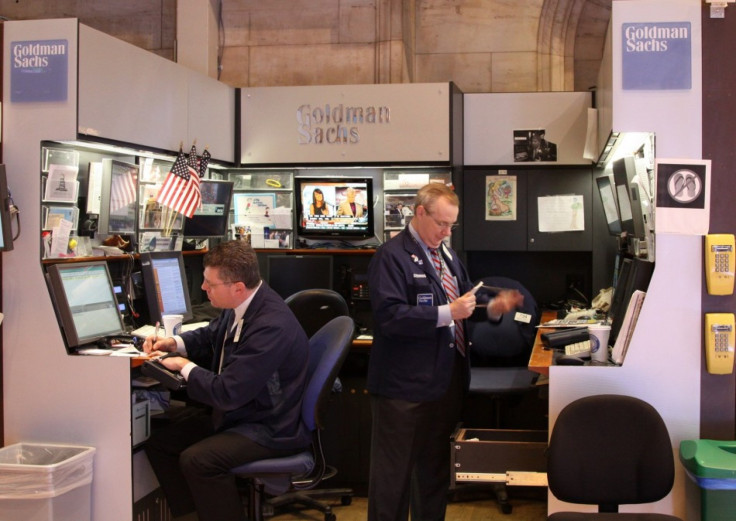Bond Market Analysis: Investors Loading Up on Corporates, Banks in 2012

Call it the calm after the storm.
If volatility, panic and the resulting tightening of investors' purses was the credit market's narrative in the second half of 2011, a dearth of bad news since Jan. 1 combined with a flood of cash from investors now confident enough to put their money back into corporate bonds is the new story.
"Calm has broken out," Guy LeBas, chief fixed income strategist at Philadelphia-based broker-dealer Janney Montgomery Scott said, describing what may be a new normal in the corporate bond market.
That calm has been a respite for investors, who have bid up several monster issuances by various types of corporations in the three short weeks since the year started. Investment-grade issues by highly rated companies, as well as speculative, or "junk" bonds from lesser-graded corporations, have totaled $44.2 billion in 2012, according to numbers from market data provider Dealogic cited in the Wall Street Journal on Friday. That amount is a record for the brief time period.
At the same time, the difference between the amount paid by specific corporate borrowers and "ultra-safe" U.S. Treasuries with similar maturities is falling. Known as the yield spread, is has declined to levels not seen since the Eurozone sovereign debt crisis intensified last year.
Other measures of credit market stability are also pointing up. The Markit CDX IG Index - which tracks the cost of buying protection on benchmark five-year investment-grade, mostly BBB-rated bonds - is at 107.96 basis points, slightly more than one percentage point. That's down from mid-December when the index exceeded 130. The yield on "junk" bonds has also fallen to levels not seen since August.
Christmas in January
The lowered spreads, signifying the increased willingness of investors to loan money to corporations, is being put to good use by a variety of corporate issuers.
On Jan. 11, large North American retailer Macy's placed $800 million in new debt up for grabs. In spite of holding a corporate credit rating just one notch above "junk" status (BBB-), the company only paid an average spread of 200 basis points.
That was less than what the company had expected to pay, and less than the spread on bonds placed by higher-rated competitor Nordstrom in an October issue.
Other large corporations to take advantage of the improved market conditions include Minneapolis-based Target Corp. and Japanese carmaker Toyota Motor Corp., who recently issued $1 billion and $2 billion in new debt, respectively.
The king of all bond issuances for the year, however, was a $7 billion dollar issuance by brewing behemoth SABMiller.
The SABMiller debt placement, done to repay other debts taken up when the company acquired Australian beermaker Foster's last year for $12.8 billion, was a grand slam by almost any measure.
The largest issue since February 2010, the notes were issued in four tranches that carried spreads between 150 and 200 basis points over U.S. Treasuries. Fully $3 billion worth of the $7 billion was 165 basis points or less over U.S. Treasuries.
'Bank' Not a Four-Letter Word
Perhaps more notable than the sudden trust investors are putting in corporate bonds is the trust they are putting in the bonds of banks, despite their heavy exposure to the ongoing sovereign debt problems in Europe.
"The markets are generally much more welcoming to new issues," said LeBas, the Janney fixed income strategist, noting as the main driver "the lack of explosions coming out of the other side of the pond."
As he explains, a lot of the reason banks are suddenly motivated to issue new debt is the fact there is a substantial amount coming due in 2012.
Goldman Sachs, Citigroup and Bank of America all issued new debt this week, raising a combined $7 billion dollars. The Citigroup issue, for 30-year notes, was the first time the company had tapped the credit market in over two years.
While the spreads were higher than for nonfinancial investment grade debt -- Goldman Sachs paid 380 basis points over Treasuries for their 10-year notes, for example -- they were notable for their size, and the fact they came on the heels of less-than-spectacular fourth-quarter earnings.
The boom in bank-issued debt placements in U.S. markets follows what was an even more surprising trend at the very beginning of the year, namely, European banks -- albeit only the highest-rated ones -- able to effectively place debt in euro credit markets.
On Jan. 11, A+-graded British Standard Charter PLC was able to place €1 billion in seven-year debt at 225 basis points over the benchmark Euribor rate for seven-year notes. Earlier in the month AAA-rated Rabobank, the only bank in Europe with that sterling of a credit rating, placed 10-year bonds that yielded 175 basis points more than Euribor swaps. ABN Amro, another highly regarded house of finance, and Swedish bank Svenska Handelsbanken also issued bonds early in January.
Uncertainty about uncertainty
Because it has been highly unforeseeable European events that caused most of the volatility in 2011, it is hard to know if the calm will last. That uncertainty about the course of the Eurozone's sovereign debt crisis seems to be motivating borrowers.
"Because the markets are very volatile, more than what happened a month ago or will happen a month from now, what matters is what's happening right now," Kevin McPartland, director of fixed-income research for financial markets research firm TABB Group said.
And there's always the allure of an almost-free lunch. "Funding is cheap so there's a lot of incentive to tap the markets now ... even if they don't have anything to do with the money," McPartland said.
© Copyright IBTimes 2025. All rights reserved.





















